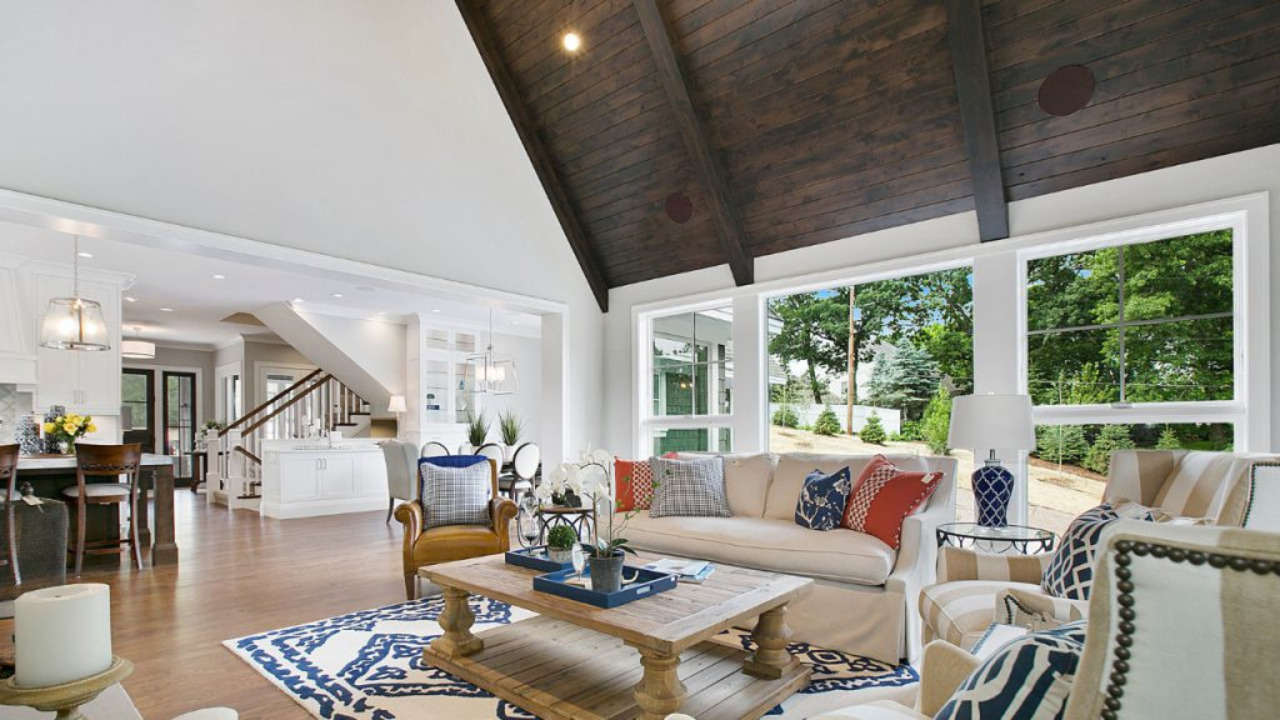When you enter any building, your eyes make a swift scan to adjust to and appreciate the interior if it deserves so. Just like the furniture that provides a comfy look, the decorative ensembles that are aesthetically compelling, a customized ceiling will help complement the look and help you connect with it.
Ceilings play an integral role in upgrading your interior look and creating coherence and a sense of spaciousness. In this article, we will guide you through all the ceiling types both in residential and commercial construction works, but before we jump straight to the types, let us first discuss what ceilings are.
Table of Contents
What are Ceilings?
The word “ceiling” is used to refer to the uppermost surface of a room or building space; in other words, it is the innermost surface of the roof that is visible to one on the building inside.
Ceilings do not just serve to highlight the aesthetics of your interior; rather, they also function to provide insulation, protection from moisture damage, support for ventilation systems and electrical wiring, etc.
The ceiling type in a building can unarguably vary depending on the client’s choice, the building type and its structural system, and the functional requirements of the space. Similarly, the ceiling material also entails variety to make sure the building inside doesn’t look drab under all circumstances.
Types of Ceilings
The types of ceilings range from plain or feature decorative elements such as moldings, beams, or patterns. However, a specific classification of different ceiling types can be made based on the building type i.e., commercial or residential.
8 Types of Ceilings in Homes You Can Choose From
In the market, different kinds of ceilings are available for home designs. We have listed 8 of the best types of ceilings in homes for your next building project:
1. Flat Ceiling

A flat ceiling is something we have all seen and there’s nothing new in it. You simply paint the surface of your ceiling to smoothen out the irregularities and finish the look. To some, this ceiling type seems dull, even when painted with a color other than white.
2. Popcorn Ceiling
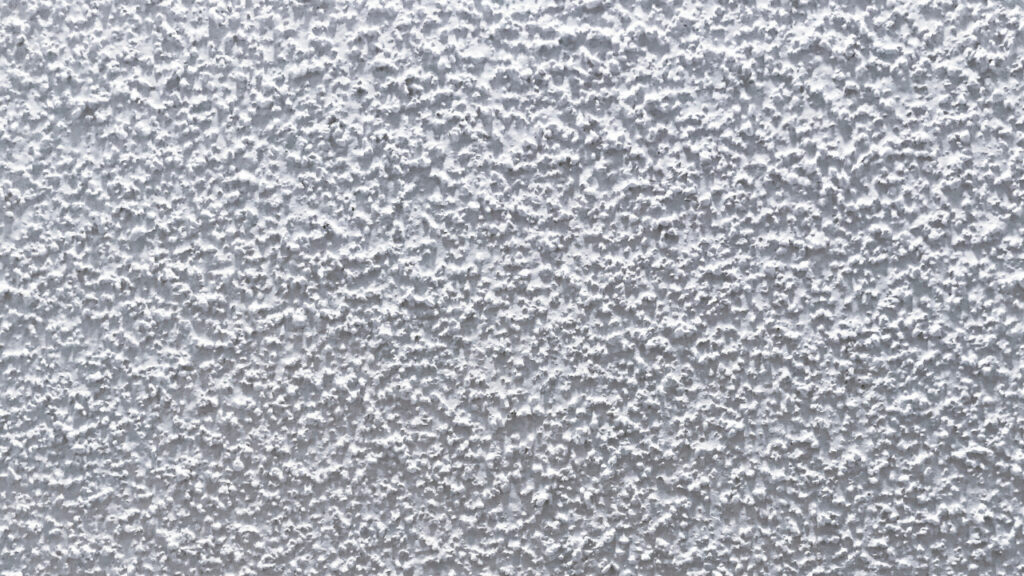
A popcorn ceiling is a textured ceiling wherein small nodule-like imperfections are created on the surface of the ceiling by spraying a mixture of drywall, vermiculite, and/or some fibers. The grainy look becomes even more aesthetic when given a color that elevates the look of the surroundings.
3. Tray Ceiling

Tray ceilings feature an inverted trough that makes the interior even more capacious and commodious. This architectural feature adds depth to the interior and a step is created in the ceiling to project a tray-like effect. Tray ceilings are common in the dining rooms and living rooms of large houses.
A step in the ceiling can be provided by creating a height difference between the center of the ceiling and its surroundings. You can either go for an elevated center or elevated sides. The central portion can also be given an extra touch of architecture by providing it in a dome or vaulted shape.
Tray ceilings will also allow you to use the recessed portion of the tray to light your interior as per your desire. You can create a subtle and illuminated effect by customizing the lighting in your room.
4. Coffered Ceiling

Coffered ceilings have a grid-like pattern with panels sunken down a little to create some recesses in the grid. This look is sophisticated but not new since ancient Greek and Roman architecture often made use of it.
The grid pattern is usually created by using small wooden beams that run in both perpendicular directions to divide the ceiling area into equal-area squares or rectangles.
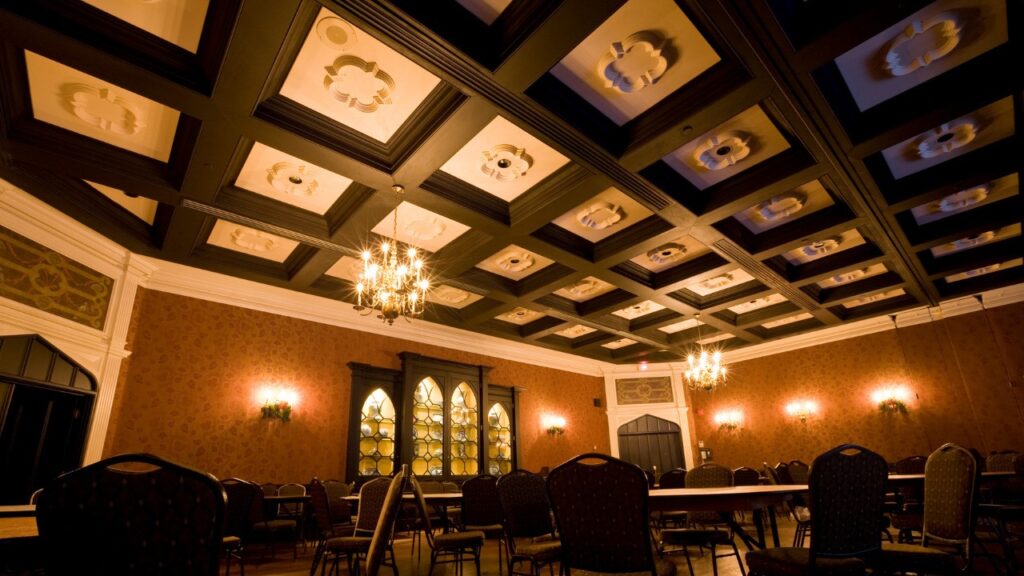
Coffered ceilings will elevate your house look by adding a touch of visual texture and complexity. The recesses in the ceiling in the form of squares or rectangles also provide sound insulation and can effectively be utilized for customizing interior lighting.
5. Suspended Ceiling
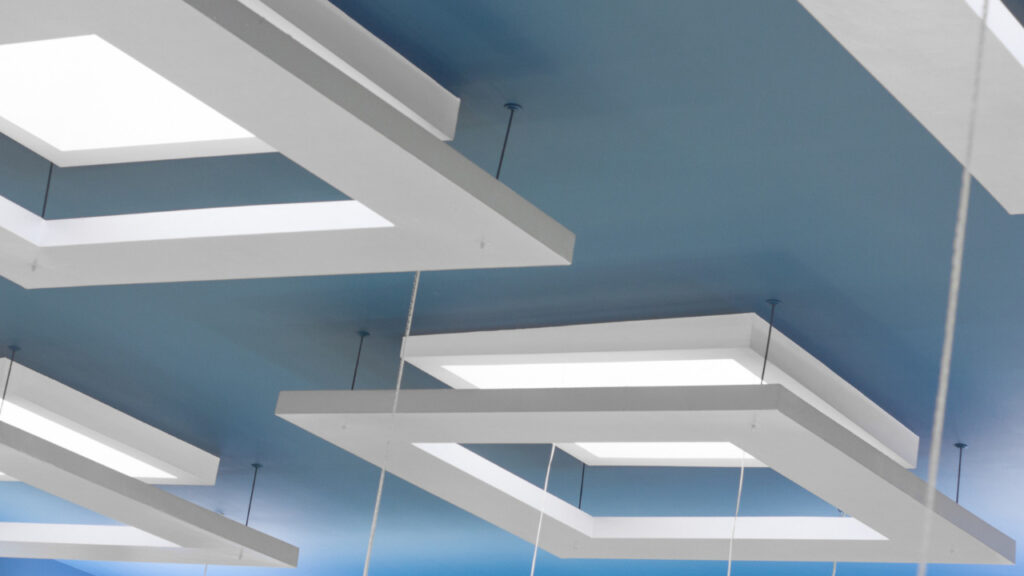
Suspended ceilings are also called drop ceilings or false ceilings. In this type, small panels (square or rectangular) are interconnected to form a ceiling pattern below the main structural ceiling, hence the word suspended.
Suspended ceilings will help you provide easy access to electrical wiring, plumbing, or HVAC systems. Even if the ceiling gets damaged over time, new panels can be installed without any effect on the main structural ceiling.
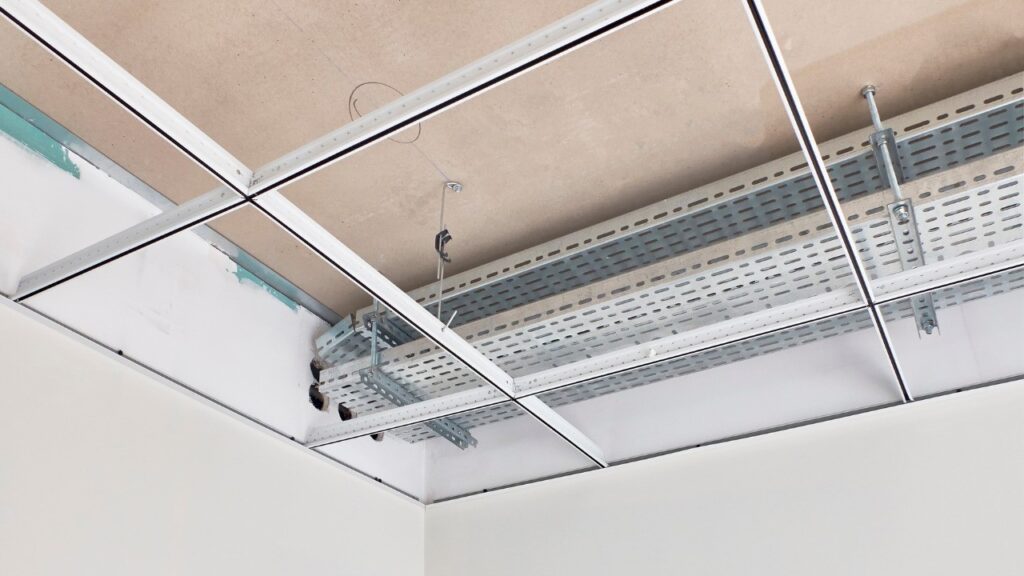
An important point to note is that false ceilings are non-load-bearing. This means that except for their dead weight, they do not carry any structural loads coming from the top. This can also indicate that they will have a longer lifespan if properly maintained.
6. Vaulted Ceiling

A vaulted ceiling is characterized by a unique architecture that utilizes a sloping shape to create a sense of spaciousness in the interior. The concept of a vaulted ceiling is borrowed from ancient architecture that had high roofs with slopes on either side of the summit.
The ceilings, in this case, rise visibly higher than the walls and this striking feature will create a sense of capaciousness in your house. The pitch can vary from mild to steep.
Vaulted ceilings allow for more light to enter the inside of buildings to illuminate the interior. The tall windows will also allow you to peek into the outside natural beauty in the daylight. In addition, better ventilation can be expected if you go for such a ceiling.
7. Cathedral Ceiling
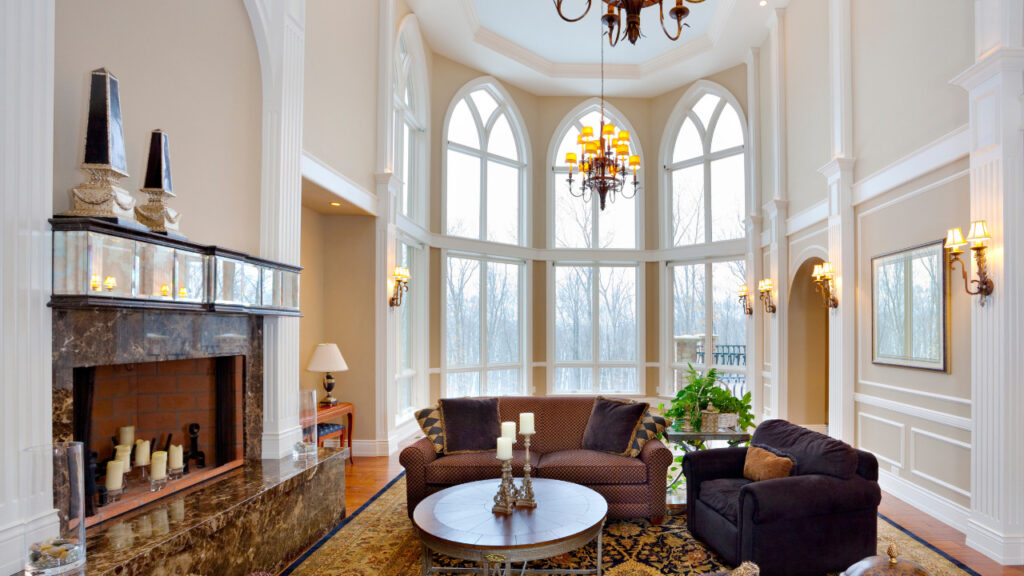
As the name indicates, the concept of cathedral ceilings is derived from cathedrals, high-pitched ceilings that follow the roofline. Just like vaulted ceilings, they create a sense of openness and comfort and are aesthetically very pleasing.
They will also help you elevate the look with the right furniture and interior décor.
8. Beam Ceiling

Beam ceilings feature exposed beams made of timber, steel, or even faux material to impart an aesthetic look. The arrangement of beams can be varied to create different patterns such as crisscross patterns, grid patterns, etc.

The beams, in this case, serve a twofold purpose i.e., as a structural element and a decorative element. This means that apart from enhancing the architecture of your interior, they will also bear the due share of loads coming from the top and transfer them to the underlying elements.
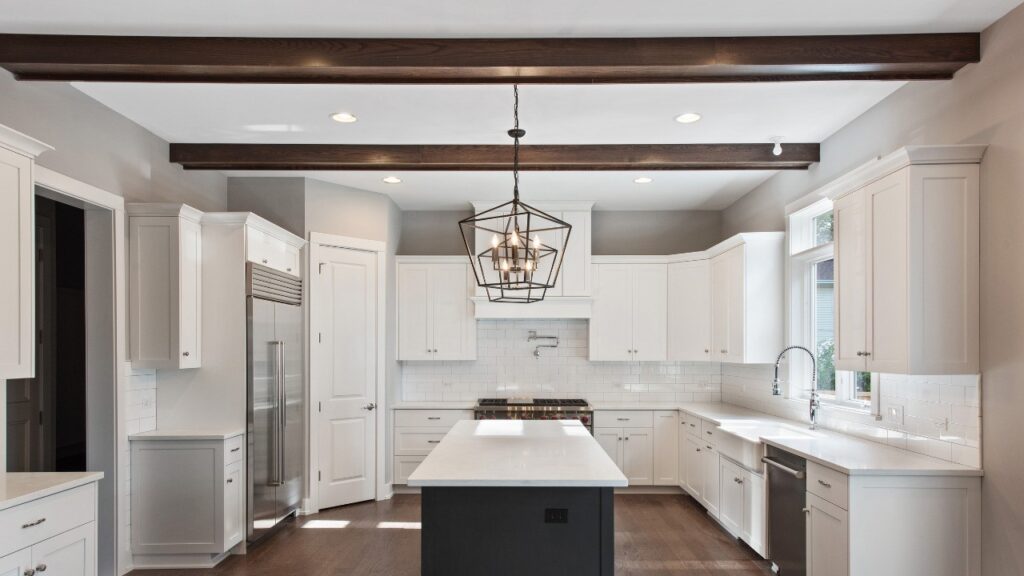
6 Types of Commercial Ceilings
The customization or aesthetic variety of commercial ceilings is second to none. Most of the ceilings used in residential works can also be used in commercial buildings.
1. Acoustic Ceilings

Acoustic ceilings are efficient in sound absorption and help prevent noise levels from intruding into the building. In other words, they prevent sound reverberation inside a commercial building.
With controlled levels of noise in buildings such as offices, hospitals, etc., the comfort level and working environment both exude positivity. The ceiling color and texture can be adjusted to complement the surrounding look. These ceilings can also accommodate fixtures such as ventilating systems, etc.
2. Exposed Ceilings
Exposed ceilings are those that have beams, pipes, and wiring systems deliberately left exposed to enhance the aesthetics instead of concealing them. The look they impart reminds me of an old workshop or industry and the raw looks help connect to it aesthetically.
With exposed ceilings, you can go for future modifications or renovation works easily without having to go for extensive demolitions. In this regard, they offer adaptability and flexibility.
3. Suspended Ceilings
Just like residential buildings, suspended or false ceilings can also be used in commercial buildings. This makes the ceiling type versatile concerning performance, aesthetics, and spatial coherence.
4. Open Cell Ceilings
Open cell ceilings feature a collection of open cells that are interconnected to form a pattern that resembles a grid. This three-dimensional pattern allows the ceiling to remain partially exposed and can be looked through.
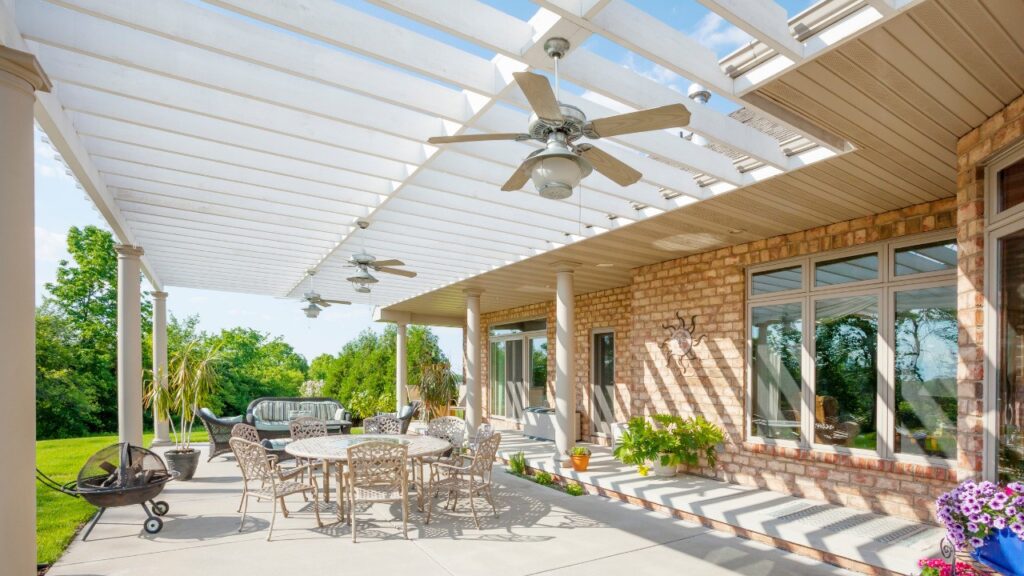
These ceilings also increase the available space within a building and allow for better air circulation, thereby keeping the interior at ambient temperatures. It is mostly employed in contemporary commercial buildings wherein unique designs can be created from a focal concept.
5. Metal Ceilings
Metal ceilings utilize metals for structural as well as decorative work. This means that metal panels, planks, or tiles are used to upgrade the ceiling look and open up aesthetic possibilities.

Metal ceilings are durable and strong. They also provide resistance to wear and tear and come in various shapes, sizes, textures, colors, finishes, etc., allowing you to play with your choices. In addition, metal has an inherent reflective property and in the case of metal ceilings, this feature allows better distribution of light in the building interior.
6. Expanded Mesh Ceilings

Expanded mesh ceilings make use of expanded metal mesh as the primary material. These sheets are cut and stretched to form a diamond-like pattern that is visually aesthetic. These ceilings allow for better ventilation and have better acoustic performance too.
Conventional Ceilings

Conventional ceilings are the ones that are most common and can be found in almost every home. They are made from a lower-cost material and have a drywall finish in most of the cases. The installation of such ceilings is also easy.
These ceilings have a smooth, plane surface with no surface imperfection and they are essentially flat. The term conventional is used to refer to these ceilings being the go-to option for homeowners in the recent past.
However, upgrades in the house interior works have swept these ceilings under the carpet to some extent since people now prefer a ceiling type that wholly complements their interior without making it congested and any less coherent.





